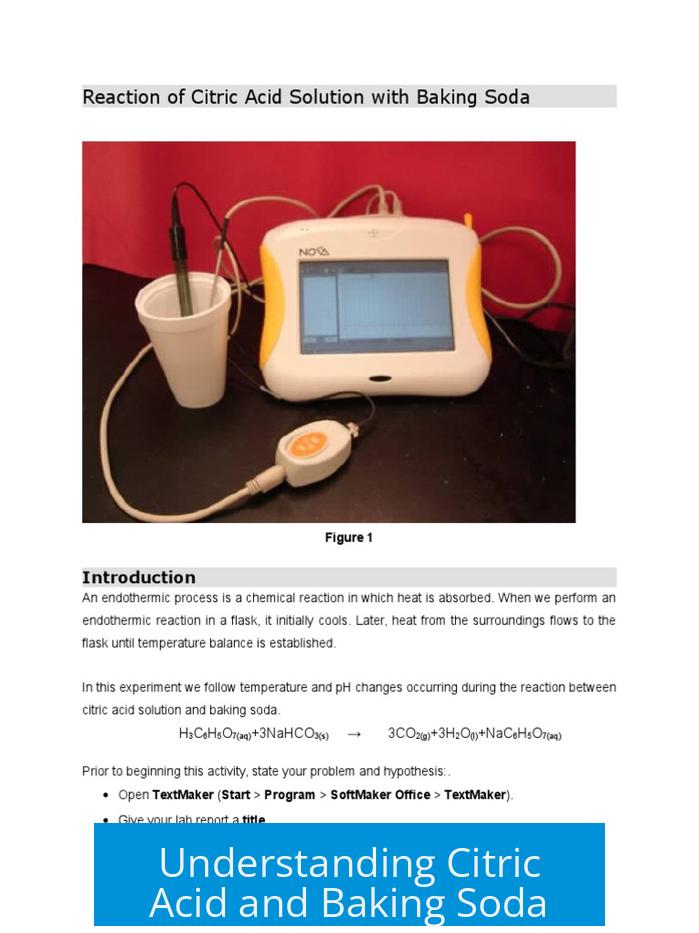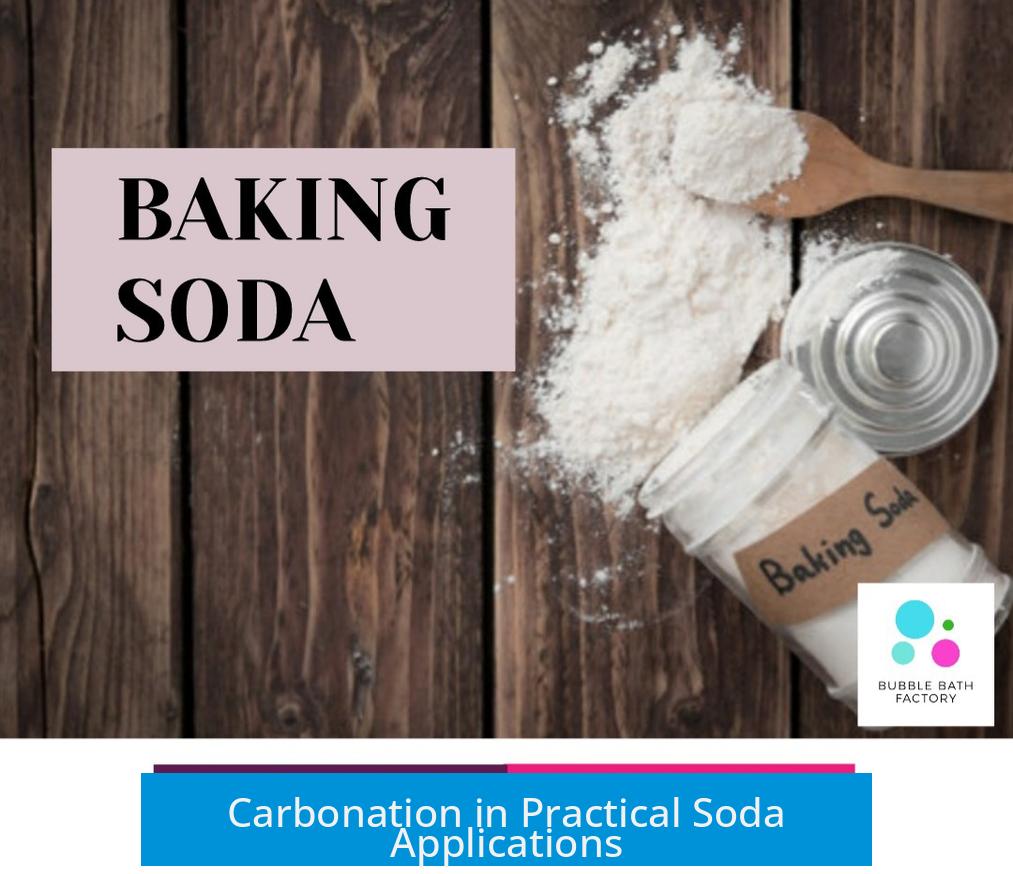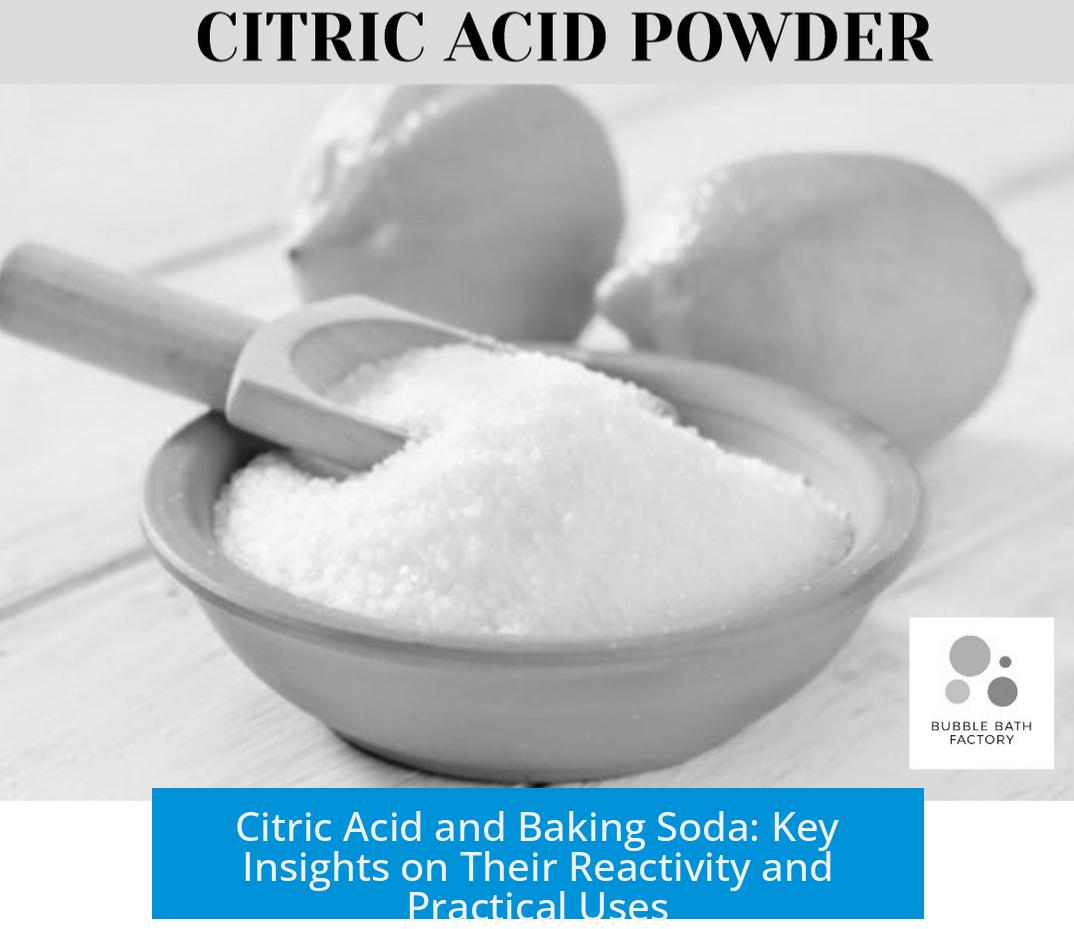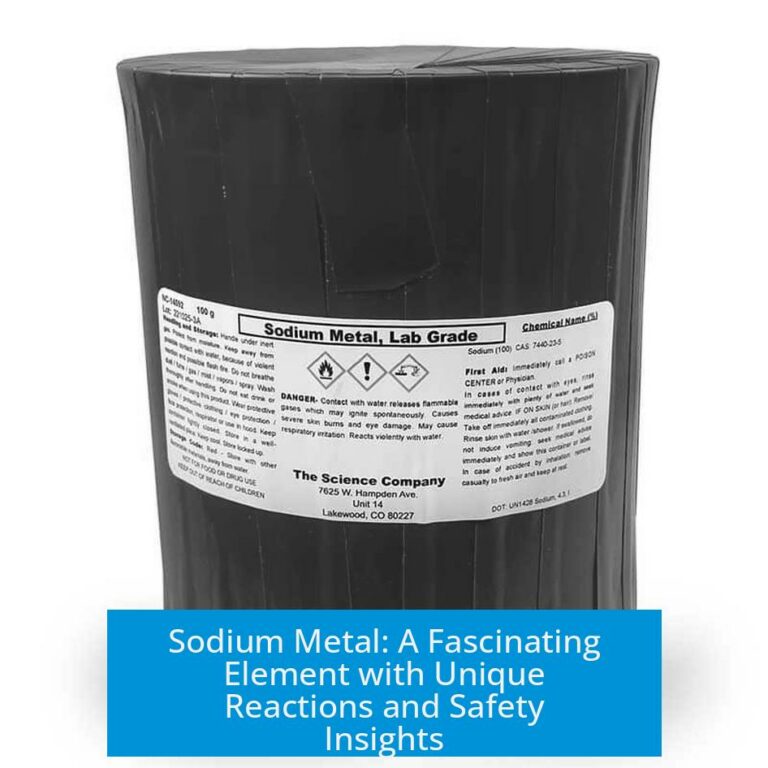Understanding Citric Acid and Baking Soda

Citric acid and baking soda react together to produce carbon dioxide gas, following a stoichiometric ratio where ideally 3 moles of baking soda react with 1 mole of citric acid, but practical applications often simplify this ratio to about 1:1 by mass for CO2 generation.
Solubility Characteristics
Citric acid dissolves efficiently in water, with about 60 grams dissolving in 100 grams of water at room temperature. Baking soda, however, is less soluble, dissolving roughly 10 grams per 100 grams of water under similar conditions. This difference influences how each reagent is prepared for reactions.
Stoichiometric Ratio and Reaction
| Compound | Molar Mass (g/mol) | Moles Required (stoichiometric) | Mass Ratio (baking soda : citric acid) |
|---|---|---|---|
| Baking Soda (NaHCO3) | 84 | 3 | ≈1.3 : 1 (by mass) |
| Citric Acid (C6H8O7) | 192 | 1 |
One mole of citric acid can react with three moles of baking soda because each molecule provides three acidic hydrogen ions that neutralize sodium ions from baking soda. Based on molar masses, roughly 1.3 grams of baking soda is needed per gram of citric acid to fully react.
Carbonation in Practical Soda Applications

For a 355 ml can of soda, the maximum CO2 content is approximately 2-3 grams. Thus, using about 1.5 grams each of citric acid and baking soda can generate the required level of carbonation. This falls close to a simplified 1:1 mass ratio for ease of mixing during carbonated beverage preparation.
Practical Factors Affecting Reaction Efficiency
- Fast sealing of the container is crucial to minimize loss of CO2 gas.
- The ratio of reagents is less critical than operational details such as temperature, surface area, and mixing speed.
- Theoretical stoichiometric ratios often do not perfectly predict gas generation due to real-world variables.
Overall, laboratory chemistry models do not fully capture practical outcomes in home or industrial setups. Reaction dynamics vary with environmental and procedural factors.
Key Takeaways
- Citric acid dissolves more readily than baking soda at room temperature.
- The stoichiometric molar ratio is 3 moles baking soda to 1 mole citric acid.
- Mass-wise, roughly 1.3 g baking soda per 1 g citric acid ensures complete reaction.
- Simplified 1:1 mass ratio is practical for producing CO2 in beverage carbonation.
- Rapid container sealing affects carbonation more than precise reagent ratios.
How much citric acid and baking soda can dissolve in water at room temperature?
You can dissolve about 60 grams of citric acid in 100 grams of water. For baking soda, around 10 grams dissolve in the same amount of water at room temperature.
What is the ideal ratio of citric acid to baking soda for CO2 generation?
Stoichiometrically, 3 moles of baking soda react with 1 mole of citric acid. Mass-wise, about 1.3 grams of baking soda are needed per gram of citric acid. A simplified practical ratio is 1:1 for CO2 production.
How can citric acid and baking soda be used for soda carbonation?
For a 355 ml soda can, about 1.5 grams each of citric acid and baking soda can produce roughly 3 grams of CO2. This amount is enough to carbonate the liquid effectively.
Does the exact ratio of citric acid to baking soda affect carbonation efficiency?
Not significantly. More crucial is how quickly you seal the container after mixing. Many other factors like temperature and surface area also influence the reaction more than the ratio.
Is it practical to calculate the precise reaction values for citric acid and baking soda mixtures?
Calculating exact theoretical values is often not useful. Practical outcomes vary due to water volume, temperature, surface areas, and handling. Experimental testing is usually better than calculation.





Leave a Comment